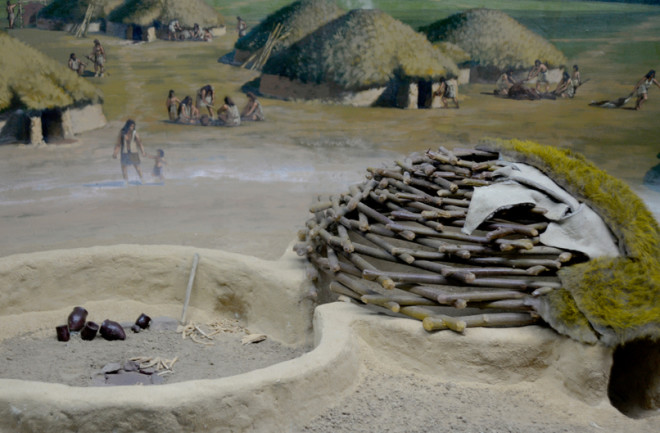Before the Neolithic Revolution, around 12,000 years ago, Homo sapiens lived scattered about the world in small groups, mostly with their extended families. They hunted, gathered and moved around, living in temporary shelters.
They had to follow the food because they didn’t yet know how to grow their own. But gradually, over generations, agriculture began sprouting up across the globe, and the world began to change. Early H. sapiens could finally stay in one place because they cultivated their own food through agriculture and domesticating animals.
What Is the Neolithic Period?
The Neolithic period, which is also called the New Stone Age, is one of the most important transitions in human society. It’s what later brought us together in towns and cities.
When great minds come together, they develop new ideas and great technology like stone tools, pottery and weaving. The less they traveled, the more they could use their minds, leading to great innovations. And none of it would have ever been possible without agriculture.
Read More: New Evidence Found for Stone Age Children, Thought Lost to Time
What Caused the Neolithic Revolution?
Archeologists think that the warming climate boosted the Neolithic Revolution, and as Earth began to thaw, it opened up the door to agriculture in places that were once frozen. While early humans might have already had the knowledge, they needed an extra push from the planet.
The Levant, located in the Middle East in present-day Lebanon, Israel, Jordan and western Syria, is a great example. Here, we see one of the first settlements, likely even earlier, around 13,000 years ago. The climate was warming, and while people had not planted what we would today call agriculture, changes were afoot.
Read More: 7 Groundbreaking Ancient Civilizations That Influence Us Today
How Did Agriculture Change the Life of Early Humans?
Though it’s called a revolution, the transition to agriculture was gradual. As humans lived on the land for millennia, they began understanding how plants grew and how animals reproduced. This allowed them to come back to the same place again and again.
People began gathering in groups of a few hundred, hunting and gathering wild wheat and barley. Over generations, these plants would spread their seeds and cultivate closer to where humans lived. Soon, humans domesticated wild wheat, and a few animals.
Similar groups of humans were slowly transitioning in other parts of the globe, across Turkey, Greece, Egypt and North Africa.
Read More: The 6 Most Iconic Artifacts From The Ancient World
How Did the Neolithic Revolution Encourage the Growth of Civilization?
As humans returned to the same place more often, temporary shelters turned into permanent structures, and from there, civilization was born. Gradually, people began to gather and live near one another. In time, groups became small farming communities in places like Huang He, known as the Yellow River in China. Food staples of North America, like corn, beans and squash, led to the birth of civilizations in Mexico and Central America.
Humans did not write during the Neolithic Period, but they still left traces of their culture behind in burial sites, tools, art and crafts. Toward the end of the epoch, around 5000 B.C., we start to see the first pieces of fine pottery found in central China. We also start to see the first jade carvings in China found in intricate jewelry like earrings, pendants and bracelets.
Read More: What Was Stonehenge Like Before It Was Built?
How Did the Neolithic Revolution Change Human Societies?
During the Neolithic Revolution, the more humans came together, the more they invented. The farming communities of the Neolithic period would soon give rise to the following Bronze Age dynasties, including the Sumerians, Babylonians and the Assyrians.
The Bronze Age would lead to the Iron Age in 1200 B.C. and the Roman Conquests that followed. By 200 B.C., the Romans had conquered Italy, North Africa, and much of the Middle East, building a society that is considered sophisticated even by today’s standards.
But none of these transitions would have ever occurred if humans were still scattered about the globe hunting and gathering. With the birth of a more sedentary lifestyle, humans had time for something other than their next meal. And when humans have time to think, man the ideas that we can come up with.
Read More: Why Did Stone and Bronze Age People Crack the Bones of Their Dead?
